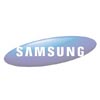When It’s Disruptive, Spin Out and Spin In. Resistance Is the Key.
With the continuation of research into how disruptive design efforts and “Lean” capabilities increases the need to quickly identify the core drivers of an organisms outliers and either integrate or exaggerate previous prevailing notions of “let’s not do that” are almost no longer valid as groups that quickly validate disruptive new product development efforts make breakthroughs that often lead to innovation. Where this become even more exciting is the overlap between existing internal methodologies.

In Assumptions in the Theory of Disruptive Innovation we quickly learn that disruptive innovations ( including the people that create them and often directly from what is seen as a unmet future need by users ) is often incompatible with existing preferences, incentives and competencies of actors in a firm’s value network. With this it is these innovations that are met with resistance when it comes to even approaching topics that can directly effect the validity or usage of said innovation in the real world. Now timing aside, overcoming such resistance, the incumbent firms or even incumbent internal actors often design a new models for acceptance, something that requires a nuanced and creative relationship with external stakeholders, especially when the environment or product line is characterized by a high degree of complexity. It is this key capability as detailed by this research that articulates the need for specific alternative methods of usage and acceptance that when properly executed allows the innovators to return to the fold of the organization and which radically effects the design competency and capabilities of the firm and the innovation created.





































